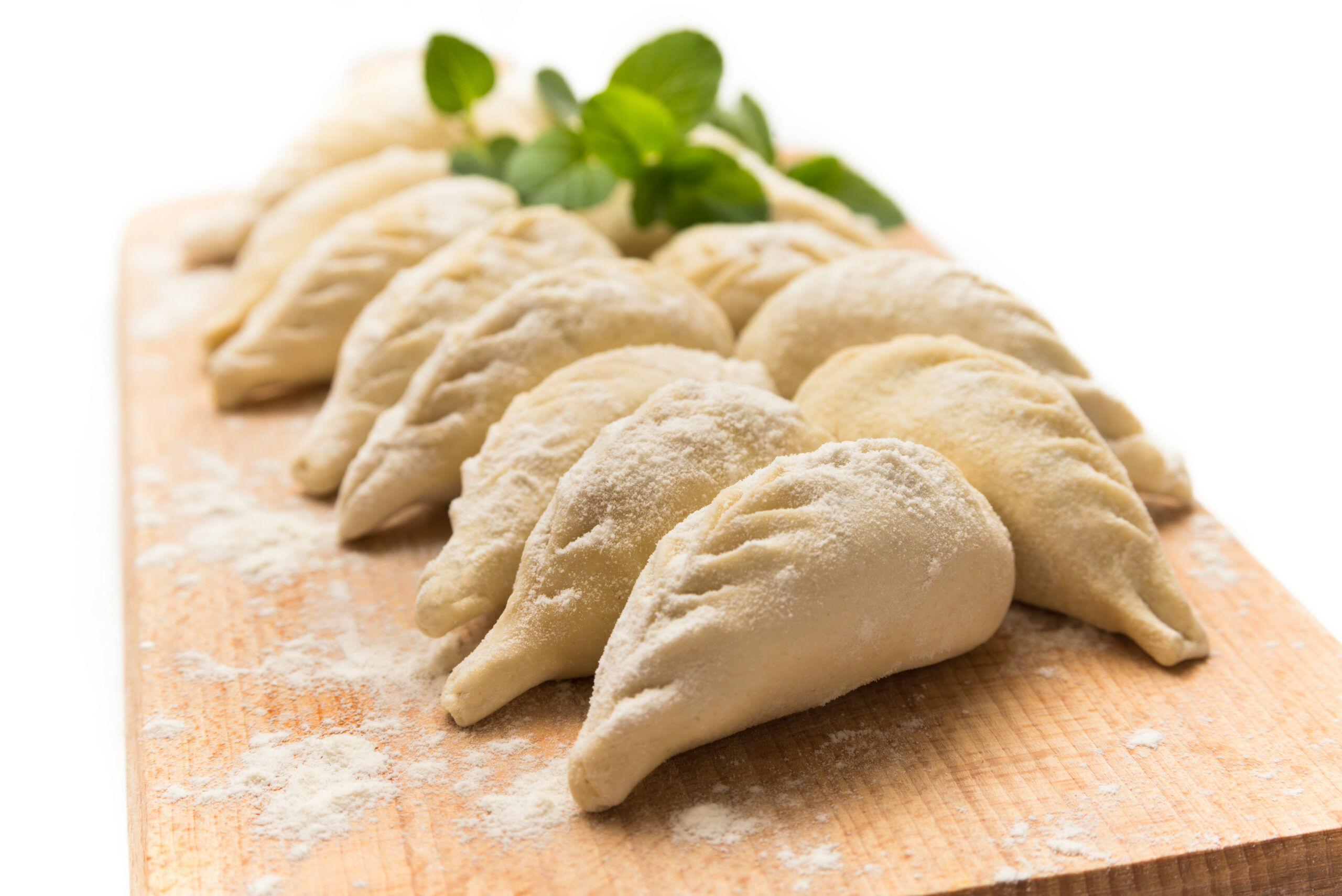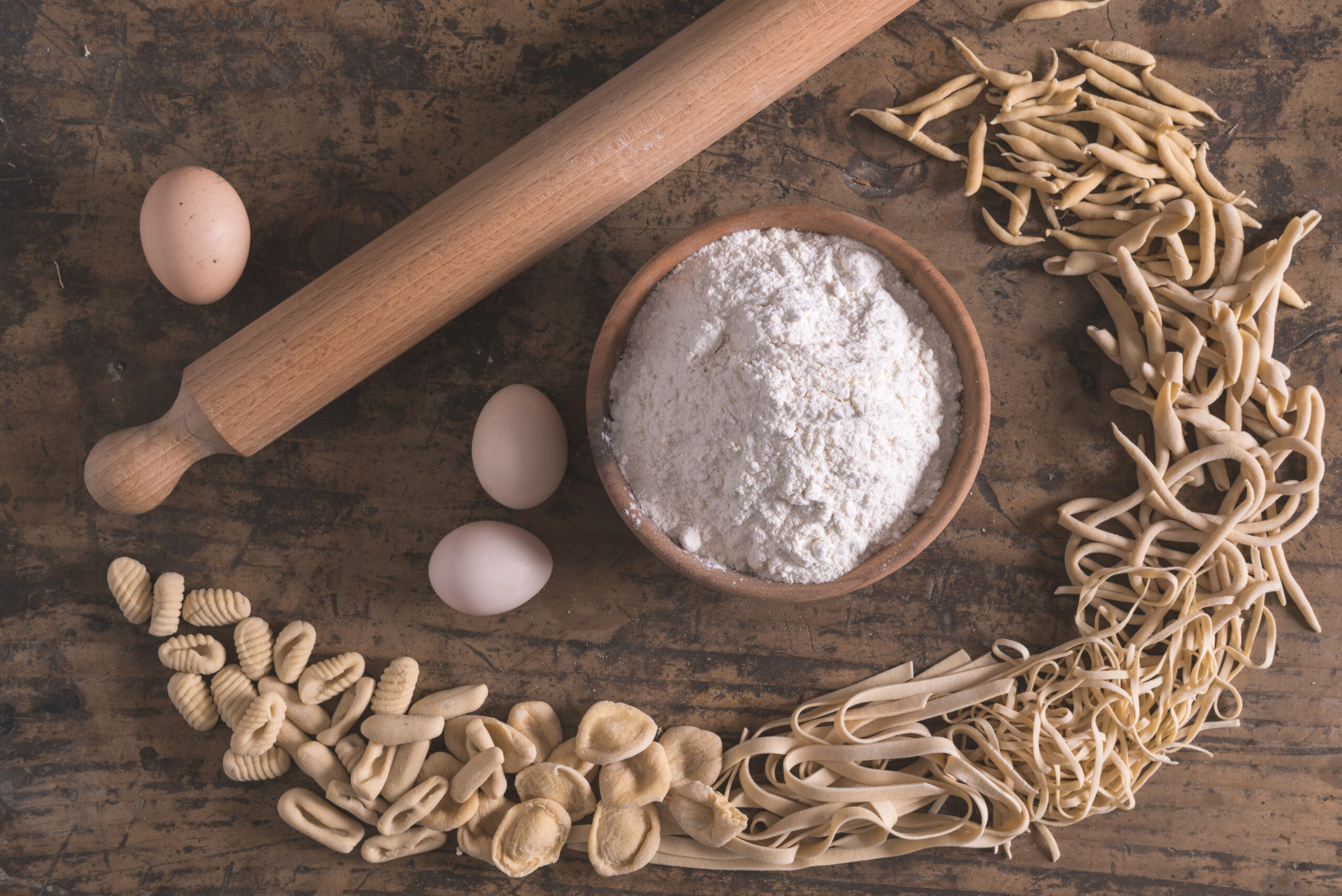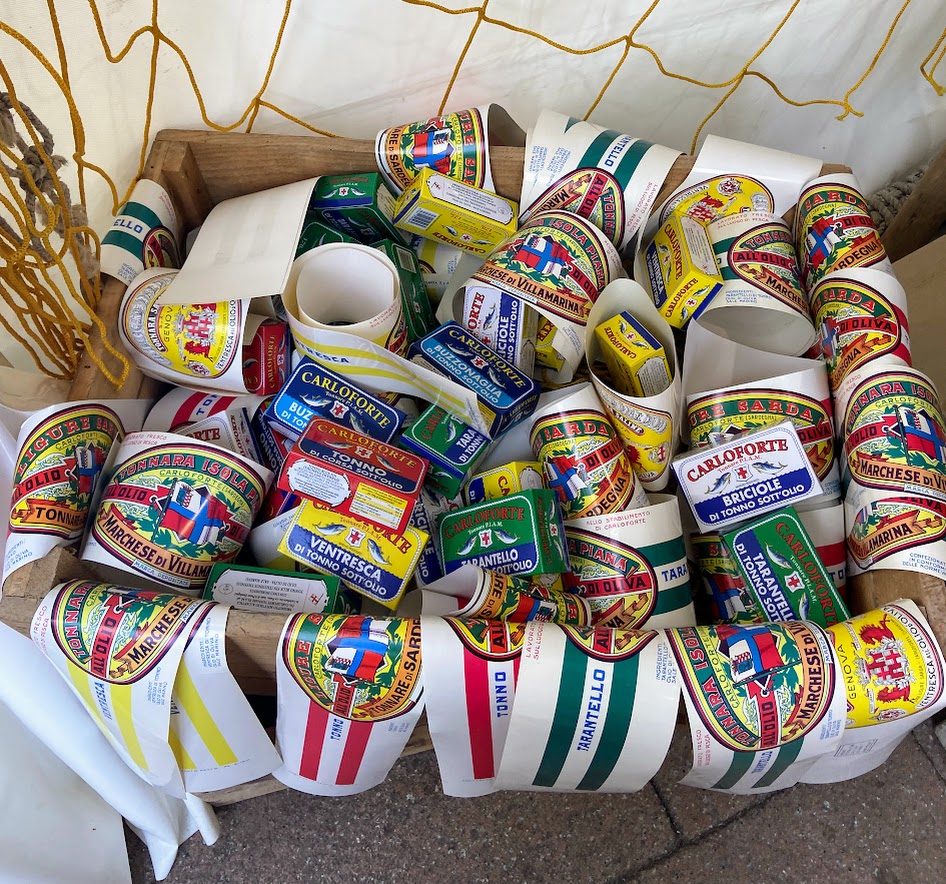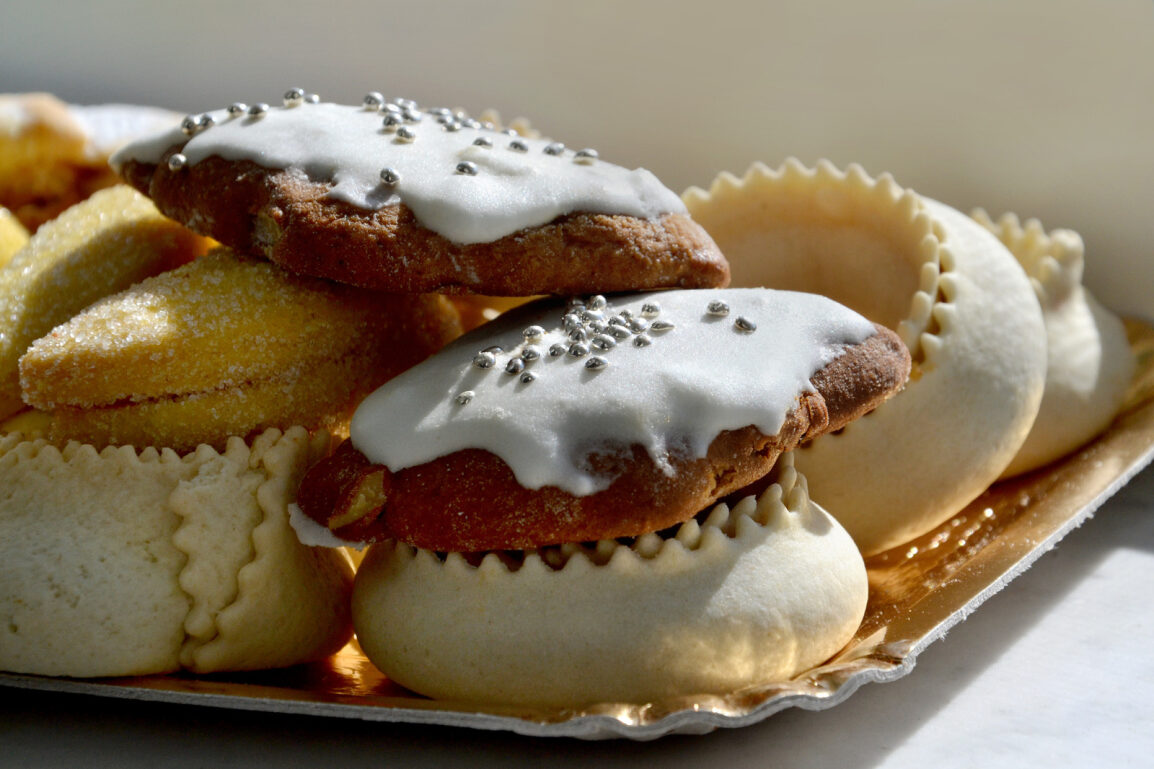
Typical and fresh pasta
They say that food can tell the story of a territory more than anything else. For Sardinia, this saying is particularly true: each community on the island presents its culinary skills and maintains a strong bond with tradition. Pasta has always played an important role in this context. Semolina and hard wheat produce a list of high quality products rich in flavour. Great emphasis is placed on freshness and care in production, and the shapes that pasta in Sardinia forms are unique.
CULURGIONES. The pasta typical of eastern Sardinia, the Ogliastra region, is one of the most representative types of pasta in Sardinia and not only in taste but also in appearance. Carefully crafted pasta has an elongated form and a “spighita” decoration in the shape of spike of wheat. Originally created as a poor food, the great skill of housewives in ancient times allowed to develop and spread the style of this pasta all over the island. Fillings can vary in individual regions, they change especially according to agricultural and food availibility in the given area. The basic version contains a filling made of potatoes, pecorino cheese and mint and is served with a tomato or basil souce. It is a simple, peasant dish, but its authenticity, taste and delicacy make culurgiones a real culinary experience.
FREGOLA. Fregola is a typical Sardinian pasta prepared from semolina hard wheat, also known as fregula, fregua, succu, cascá or pistitzone (depending on the region). The special feature of Fregola is its form. Irregular, small balls of pasta are created by kneding semolina and water for a long time, then they are roasted in the over, where they acquire a darker color and an unmistakable taste. The color of Fregola (just as the taste) is different especially in the Campidano region, where saffron is added to the mix. The most famous Sardinian recipe with this type of pasta is Fregola with clams (Fregula cun cocciula in Cagliaritano), typical mainly in the southern Sardinia. All over Sardinia you can taste Fregola with fish, tomato or white sauce.
LORIGHITTAS. On the slopes of Mount Arci, in the region of Oristano, the village of Morgongiori, is hiding a secret passed down from generation to generation. It is a recipe and technique of lorighittas preparation, special shaped hand-formed pasta, which can be considered a real pearl of Sardinian traditional cuisine. Passing down the traditional recipe to the next generation has always been the responsibility of young women in the town, whose duty, according to the Sardinian pastoral culture, was to take care of the food preparation while the men were busy in the fields. The tradition of lorighittas has long been associated with the celebration of All Saints’ Day, November 1. It was customary for women to gather in the kitchens, knead semolina flour and water together, and braid the dough on wooden tables. Lorighittas were then arranged on wicker baskets with an ornamental pattern recalling lace napkins and were left to dry. While waiting, tomato sauce was prepared, enriched with the meat of a free-range rooster, sometimes replaced by pork or wild boar in rich families. Even today the pasta preparation is done exclusively by hand and requires skill, care and time. The dough preparation itself takes at least 30 minutes and includes the process of adding a salt water, to make the lorighittas softer. Today, lorighittas are a prestigious dish in many Sardinian restaurants, and the town of Morgongiori dedicates the first Sunday of August every year to the Lorighittas Festival, showcasing its rare culinary heritage.
MACCARONES AND FERRITTU. Another type of traditional Sardinian pasta is maccarones and ferrittu (so called in the Logudoro region), also known as maccarones de busa (in central Sardinia). Handmade pasta from hard wheat semolina, salt and water, usually accompanied with the wild boar ragu, but also with lamb, veal, chicken and hare or cooked in lamb broth and topped with fresh cheese.
FILINDEUS. Today very rare pasta comes from the Nuoro region and its preparation dates back more than 300 years. From a mix of hard wheat semolina and water, long and very thin stripes of pasta are obtained by stretching, which are dried on a circular surface. The dough is then cut into pieces and immersed in a lamb meat broth, to which a little of pecorino is added at the end of cooking. It is a ritual food of devotion. It is offered to pilgrims who walk to Lula sanctuary on the night of April 30 to May 1.
ALISANZAS. Alisanza pasta is typical for the region of Oristano, more precisely the town of Bosa. Irregular pasta shapes are obtained from a mixture of hard wheat semolina, water and lard using a gear wheel. They are usually served with meat sauce, or in the Gallura region with ozu-casu, a kind of clarified butter.



